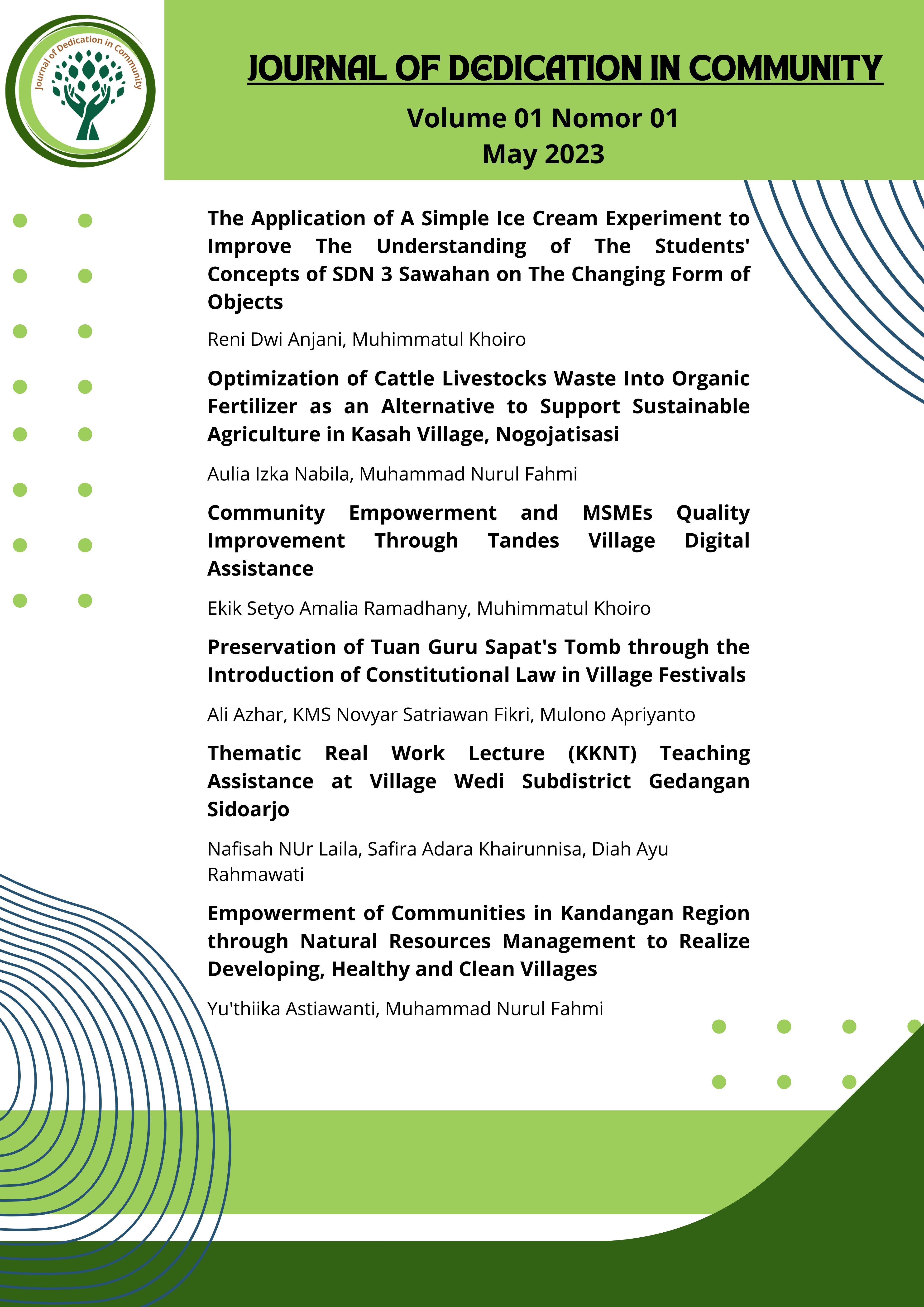Optimization of Cattle Livestocks Waste Into Organic Fertilizer as an Alternative to Support Sustainable Agriculture in Kasah Village, Nogojatisasi
DOI:
https://doi.org/10.26740/jodic.v1n1.p8-20Keywords:
Cow dung waste, Organic Fertilizer, Community EmpowermentAbstract
Hamlet Kasah, Nogojatisari Village is an area where almost every resident works as a farmer. Most of the residents in Dusun Kasah also have cattle farms that are managed traditionally. The manure from cattle farms has not been properly utilized by local residents, causing a buildup of abandoned cow manure around the stables. This service activity aims to provide education and empower the community in processing livestock manure into organic fertilizer that has economic value and can support the development of the agricultural and plantation sectors in Nogojatisari Village. The partners for this activity were the Sambeng District Agriculture Counseling Center, the Dusun Kasah Farmers Group, and the PKK Dusun Kasah Mother. The service is carried out using 3 approaches, namely counseling, simulation, and utilization. The results of this community service activity are expected to increase public awareness of the importance of processing livestock manure into organic fertilizer in order to minimize the use of inorganic fertilizers in order to preserve nature. Community awareness of the importance of maintaining environmental balance is expected to increase along with increased knowledge about the use of natural resources as organic fertilizer.
Downloads
 Abstract views: 63
,
Abstract views: 63
, PDF Downloads: 114
PDF Downloads: 114







1.png)
